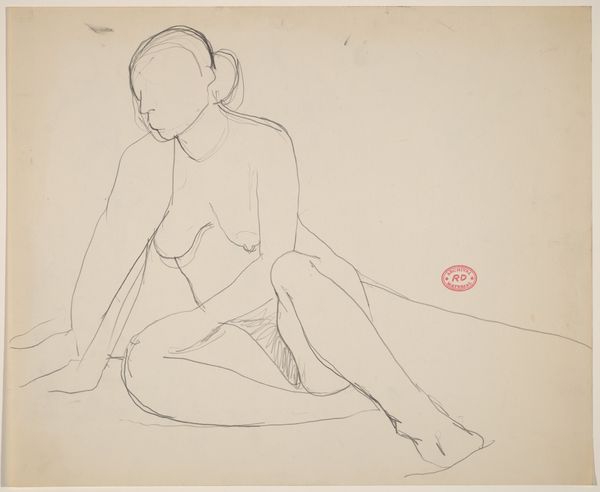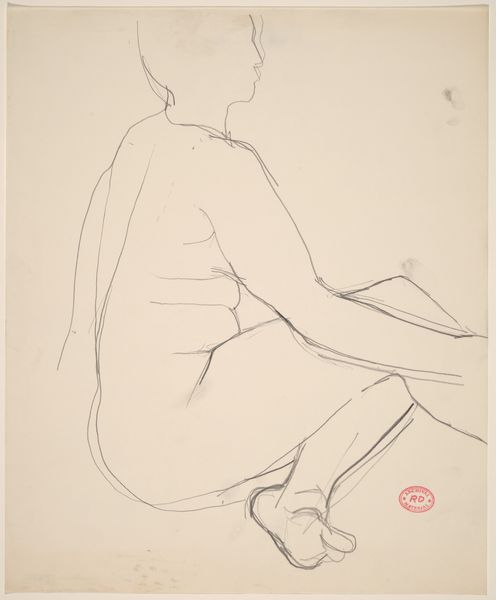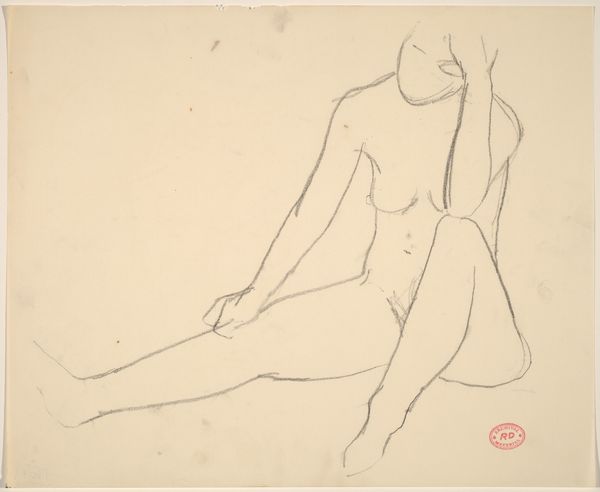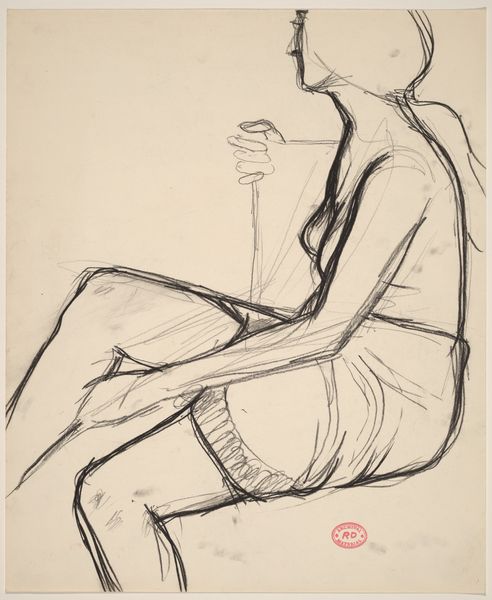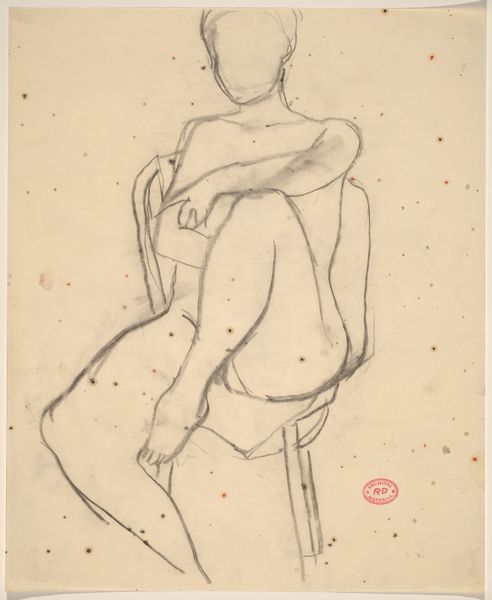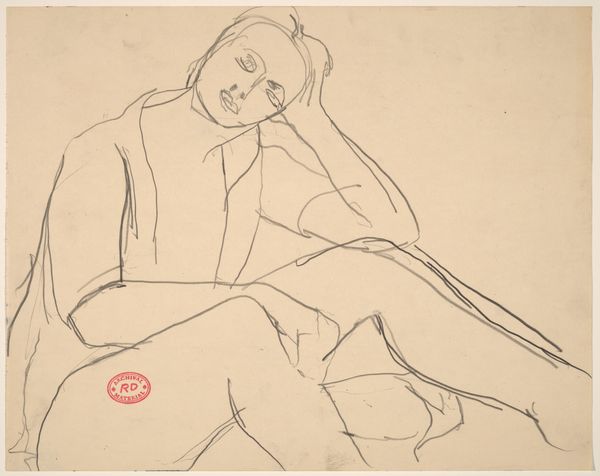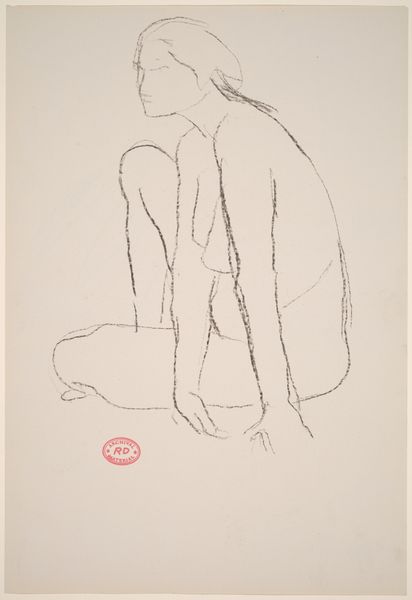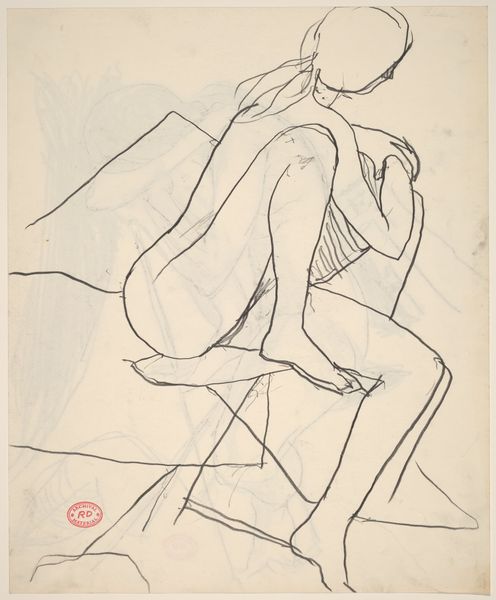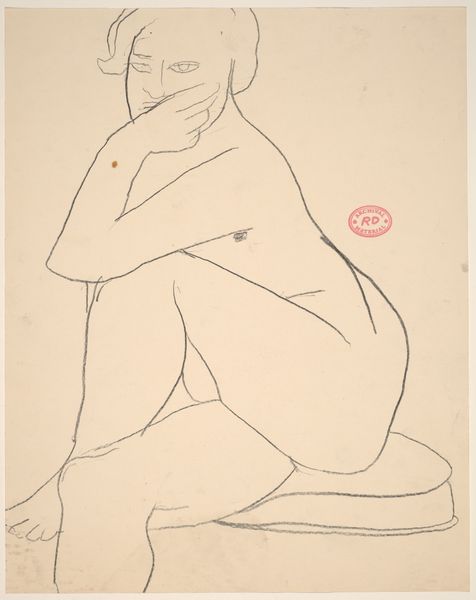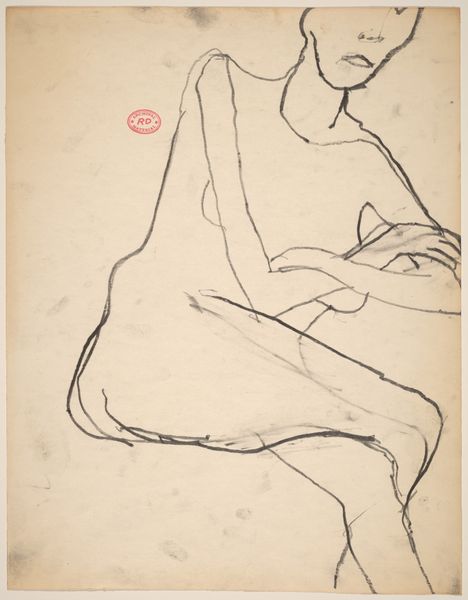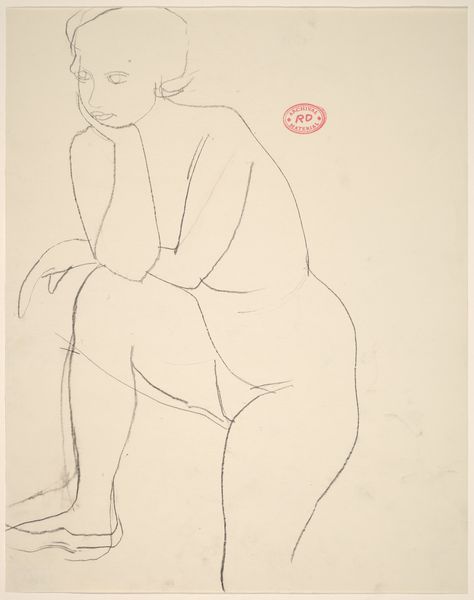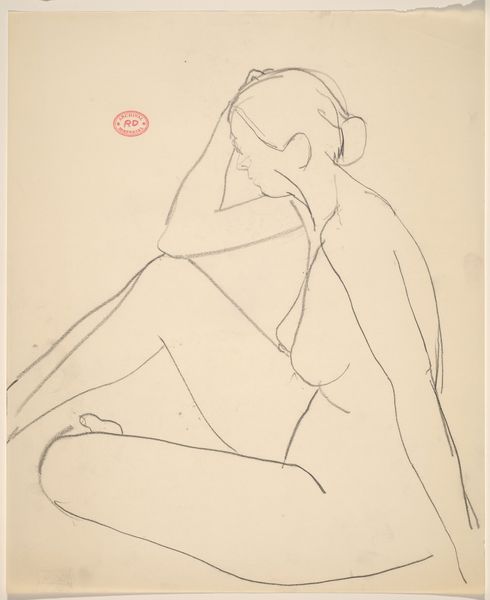![Untitled [seated female nude facing left] by Richard Diebenkorn](/_next/image?url=https%3A%2F%2Fd2w8kbdekdi1gv.cloudfront.net%2FeyJidWNrZXQiOiAiYXJ0ZXJhLWltYWdlcy1idWNrZXQiLCAia2V5IjogImFydHdvcmtzLzc4NzNmODFiLTg4YWMtNGM0MC1iYzZhLWQwMThhZWQ2ZjYwZC83ODczZjgxYi04OGFjLTRjNDAtYmM2YS1kMDE4YWVkNmY2MGRfZnVsbC5qcGciLCAiZWRpdHMiOiB7InJlc2l6ZSI6IHsid2lkdGgiOiAxOTIwLCAiaGVpZ2h0IjogMTkyMCwgImZpdCI6ICJpbnNpZGUifX19&w=3840&q=75)
drawing, pencil
#
drawing
#
figuration
#
bay-area-figurative-movement
#
pencil
#
line
#
nude
Dimensions: overall: 28.3 x 35.6 cm (11 1/8 x 14 in.)
Copyright: National Gallery of Art: CC0 1.0
Curator: Immediately, I see this work as possessing a quiet pensiveness. The limited use of line seems to distill the subject to her most essential form. Editor: Here we have an untitled pencil drawing by Richard Diebenkorn, likely created sometime between 1955 and 1967. The piece features a seated female nude, rendered in the artist's characteristic, almost sparse, linework. Curator: I’m drawn to how the gaze is directed off to the side, away from us. I wonder about the social constructs and pressures this figure might face. Is she actively challenging the male gaze that has dominated art history for so long, reclaiming a space for herself? Editor: That's a really interesting interpretation. In the context of Diebenkorn's work, especially during that period, it could also be read as an extension of his broader exploration of form and space. He was heavily influenced by Matisse. One wonders to what extent we are seeing that play with interior and exterior reflected through his model. Curator: And, it’s crucial to question how her body is represented, particularly concerning historical objectification within the nude genre. Is this just another iteration of the passive female form or can we see subtle cues toward her subjectivity and agency? I read the slight tension in her posture as the latter. Editor: Considering the broader artistic landscape of the mid-20th century, we might view Diebenkorn's work in dialogue with Abstract Expressionism. The artist is embracing figuration rather than shying away from it, at a time when abstract expressionism was a hegemonic influence. We can ask how Diebenkorn subverts or complies with the prevailing trend? Curator: It’s also important to ask questions about access and representation. Who had access to this image then, and who has access now, and how might this impact interpretation. Is there a disparity, given the historical, and social setting in which it was produced and the present moment? Editor: Ultimately, for me, this work encourages considering the ways social and artistic environments have been impacted through time and how those impact influence both its production and continued interpretation. Curator: Yes, allowing for open questions about representation, context, and impact invites engagement beyond its visual appearance. It underscores art as a space for broader conversations on intersectional social concerns, power dynamics and change.
Comments
No comments
Be the first to comment and join the conversation on the ultimate creative platform.
